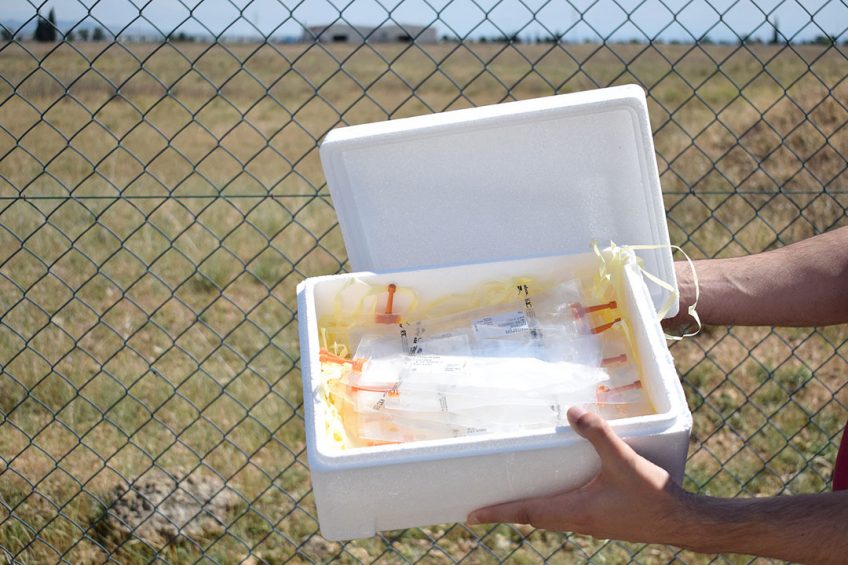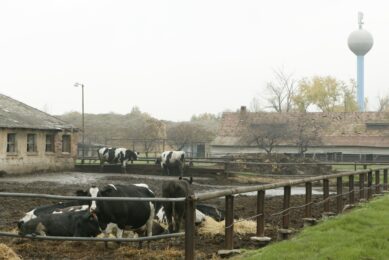From stud to sows – how to truck semen?

Transporting pig semen doses from boar stud to breeding farm is much more than just simple delivery. Temperature differences as well as vibrations are just two factors that can affect semen quality during the journey. Let’s follow semen dosages as they travel from the AI centre to the farm. What can happen and what needs to be looked out for?
Before the onset of this imaginary journey, it is good to introduce a few vital aspects of semen transport. The most important of them is temperature. The optimum temperature range for preservation of semen doses is 15–19ºC. Under those conditions, the semen’s lifespan is maximal and the sperm cell’s viability is preserved for a longer period, because its metabolic activity is decreased at basal levels without altering the integrity of its membrane and various organelles. So before anything else, it’s essential to keep the temperature constant throughout transport as well as in the farm’s storage unit, avoiding temperature fluctuations as much as possible (see Figure 1).
Thermal inertia
Another aspect to keep in mind is thermal inertia. This means that liquids like semen doses are often unlikely to rapidly change temperature. In practice, this means that when the transport begins in hot conditions, storage units for conservation will be unable to sufficiently cool the doses. Thermal inertia can, however, also be an advantage when doses have reached the desired temperature prior to being transported – irrespective of whether the semen is delivered under controlled conditions or by courier.
Stress factors
Thirdly, during transport, semen doses are going to be submitted to stress factors, including potential temperature variations as well as physical vibrations. That can result in errors (see also Figure 2).

Three parties
Finally, transportation involves three parties – a boar stud, a farm and an (external) transporter. All have different roles to play and different interests in the process. Maintaining a good balance between the three is important (see Figure 3).

1. The start of a semen transport
There are several things to keep in mind when starting a semen transport. The following set of recommendations is aimed at achieving dose transport under controlled temperatures.
- Doses should be transported once they have reached the stabilisation temperature.
- The use of sufficient amounts of transport containers as well as climate-controlled vehicles is recommended.
- Temperatures should be monitored regularly to detect possible failures during transport.
- Opening times of the semen container should be minimised.
- Stopping for a long period of time is not recommended, nor is direct exposure to sunlight.
Sometimes, however, transport under controlled temperature may not be possible. When there is no other option but to send semen doses without controlled temperature management – that is, using courier companies – then proper insulation of the parcel is recommended to prevent variation and fluctuation. Here is what to do:
- Only the doses that have reached the stabilisation temperature should be packaged.
- Polyethylene containers should be used that are either at least 4–5cm thickness or double-walled.
- Gel packs can be used to help preserve temperature in the range 15–17ºC.
- In summer or in high-temperature climates, for long-distance shipments gel packs at 4–8ºC or even frozen ones can be used to maintain temperature. Packs should never touch the doses. They should be kept separate, ensuring that temperatures will not drop below 15ºC indoors. Similarly, hot gel packs can be used in climates with low temperatures, following the same instructions applying to cold or frozen ones.
- From time to time, data loggers should register temperatures during transport.
- To increase insulation, aluminium foil can be used to wrap the doses together. Alternatively, a polyethylene box can be placed inside a cardboard box.
- If there is space, the container can be filled with polystyrene shavings.

2. During transport: vibration
A factor that has been recently studied is the possible effect of vibrations that occur during transport. As semen doses are produced in large AI centres and the routes can involve long distances and take a long time, depending on their geographical location or the country, vibration can be an important factor.
In recent years, several authors have described vibration potentially having an impact because it increases the medium’s pH and oxidative stress levels. Therefore, it will affect mitochondrial activity, acrosome and plasma membrane integrity, as well as motility.

3. Arrival of the semen on-farm
Arrival is a very important moment, as this is when temperature maintenance meets biosecurity. It is highly advisable to construct a cabin or small room with a storage unit for preservation where semen doses can be left at any time, without people entering the farm. If that not possible, an alert system could be installed for the farm staff to step out and collect the parcel. Some scientific authors state that at least 90% of deliveries must be put in the storage unit in under 15 minutes.
Nowadays there are companies with traceability systems that let producers know where their semen doses are, what the storage temperature and expected delivery time at the farm are, etc. The aim is to have constant transparency to customers on the product’s condition.

4. Proper storage on-farm
The last step includes proper storage inside the farm. Several recommendations are important at this stage as well:
- Storage units should be used that are specifically designed for the preservation of semen doses. They should be able to heat or cool, with a display showing the temperature (accuracy ±1ºC) and issue an alert if the temperature is out of the desired range.
- The storage unit should be placed in a room with an ambient temperature of 15–25ºC. This will allow the unit to work properly. Should the ambient temperature be 35ºC or higher, it will be very difficult to keep the storage unit at 15–17ºC.
- Damaging components in the ambient air, like dust or humidity, should be avoided.
- The storage unit should be plugged into an entirely empty socket. A surge protector as well as a backup UPS battery is advised to provide additional protection in the event of a power outage or overvoltage.
- The storage unit should be equipped with thermometers that show maximum and minimum temperatures or a data logger to continuously register temperature.
- It is vital to remove the doses from their secondary packaging inside the storage unit, to favour air circulation and allow stabilisation of the temperature. Placing them horizontally is advisable to ensure the recirculation of the air inside.
- Two storage units are better than one. This will allow agility in case one fails, e.g. in the middle of summer.
- Per semen dose, there should be about 0.5–0.6 litres of volume available in the storage unit.

Rotation of semen doses?
Last but not least: rotation. A controversial topic has been that of the rotation of the semen doses. It is a practice routinely carried out on farms with the aim of preventing sperm sedimentation, in a medium considered ‘toxic’ due to the accumulation of metabolic waste of the sperm cell.
To date, there have been several publications dealing with the effect of rotation on the quality of semen doses. Although in the past* it was believed to be beneficial, more recent research** has found evidence of the negative effect that this practice can have on semen quality. It is also believed that it can favour the loss of CO2 from the liquid phase to the air in the semen doses, leading to accelerated alkalinisation of the medium. This occurs with greater intensity with the use of short-term extenders, since buffers in their composition are simpler than in high-performance extenders.
A complex process to ensure quality standards
All factors addressed above must be taken into account, since these days networks can be large and complex, subject to completely different scenarios depending on multiple factors. Therefore, each company should adapt to the surrounding context and adopt the necessary strategies to obtain the desired quality standards for its final product, the semen dose.
* Research by Rodríguez-Gil and Rigau 1995.
** Schulze 2015, Bortolozzo 2017.
References available on request











